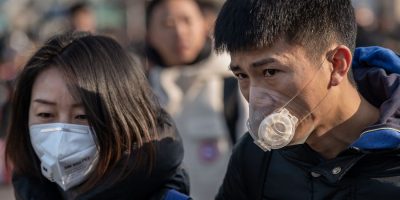Coronavirus Has Been Declared a Global Emergency. What’s Happening in China

Tom Clifford reporting from Beijing
The new coronavirus has been declared a global emergency by the World Health Organization.
“The main reason for this declaration is not what is happening in China but what is happening in other countries,” said WHO chief Tedros Adhanom Ghebreyesus. So, what measures have been taken in Beijing?
Workers returning to the capital next week after the Chinese new year break face quarantine, regardless of whether they went overseas or stayed in China. Those coming back are being told to stay at their places of residence for at least a week under self-quarantine. China’s State Council, the cabinet, announced on January 27 that the Lunar New Year / Spring Festival holiday will be extended to February 2 across the country; the holiday week was originally from January 24 to January 30. Some companies are telling their employees not to return to work until February 9, to factor in the quarantine period. This may again be extended.
Many shops, restaurants and bars in the capital have closed. Few people are taking public transport. Major supermarkets remain open but there have been isolated instances of panic buying with people stocking up on fruit, noodles, milk and vegetables.
Residential compounds have introduced a visitor list where people who are non-residents must give their name and telephone number to a security guard. Compounds usually have a number of entrance and exit points. Most have been closed, allowing just one closely guarded entrance/exit gate.
Workplaces in Beijing have instituted temperature checks for employees. An electronic thermometer, about the size of a toothbrush is placed next to a wrist and if it reads 36-37 C admission is granted. However, on many occasions the thermometer cannot immediately get an accurate reading. This can mean delays of 10 minutes or so. This has not been a major issue this past week as relatively few people are at work. However, next week when hundreds of thousands return there could be long queues and angry scenes as people are denied access to their workplaces.
Everyone in the capital, without exception, is wearing a face mask when outdoors. Some places will not admit anyone not wearing one.
The key figure is the fatality rate. It is currently estimated at around 2 percent, the WHO said.
This rate may change as a virus can mutate, according to epidemiologists but at current levels the death rate is far less than the figure for Severe Acute Respiratory Syndrome (SARS 9.6 percent) or Middle East Respiratory Syndrome (MERS 30 percent).
At least 213 people in the China have died from the coronavirus, mostly in Hubei, with almost 10,000 cases nationally. But within China, this figure varies. Once the province Hubei (where the epicenter Wuhan is situated) is removed from the calculation, the national mortality rate drops to 0.3 percent. Within Hubei province, the mortality rate is about 1 percent when excluding the city of Wuhan (5.5 percent). It is appreciably lower than SARS or MERS and far less fatal than the common flu virus.
The WHO said there had been 98 cases in 18 other countries, but no deaths.
Most international cases are in people who had been to Wuhan. However, there have been eight cases of human-to-human infection – in Germany, Japan, Vietnam and the United States.
The central province of Hubei, where nearly all deaths have occurred, is in a state of lockdown.
Wuhan, with a population of 11 million, has effectively been sealed off and China has put numerous transport restrictions in place to curb the spread of the virus.
The WHO declares a Public Health Emergency of International Concern when there is “an extraordinary event which is determined… to constitute a public health risk to other states through the international spread of disease”.
It has previously declared five global public health emergencies: Swine flu in 2009 saw the H1N1 virus spread across the world, killing more than 200,000 people. Polio, in 2014 even though it was closer than ever to eradication in 2012, saw numbers of those infected rise dramatically.
The WHO declared Zika a public health emergency in 2016 after the disease spread rapidly through the Americas. There were two outbreaks of Ebola in 2014 and 2019. The first emergency over the virus lasted from August 2014 to March 2016 as almost 30,000 people were infected and more than 11,000 died in West Africa. A second emergency was declared last year as an outbreak spread in DR Congo claiming more than 2,200 lives.
February will be crucial. The influx of workers returning to the major cities will severely test containment measures.
Mistakes have been made. At the beginning of the outbreak, the Chinese authorities said the virus was not spreading between people. We now know that is not the case.
Each infected person seems to be passing the virus on to between 1.4 and 2.5 people.
This figure is called the basic reproduction number. Anything higher than 1 means it’s self-sustaining.
It seems that this is not a virus that will burn out on its own and disappear and the decisions being made in China – including shutting down cities – are crucial to prevent it from spreading.
*
Note to readers: please click the share buttons above or below. Forward this article to your email lists. Crosspost on your blog site, internet forums. etc.

